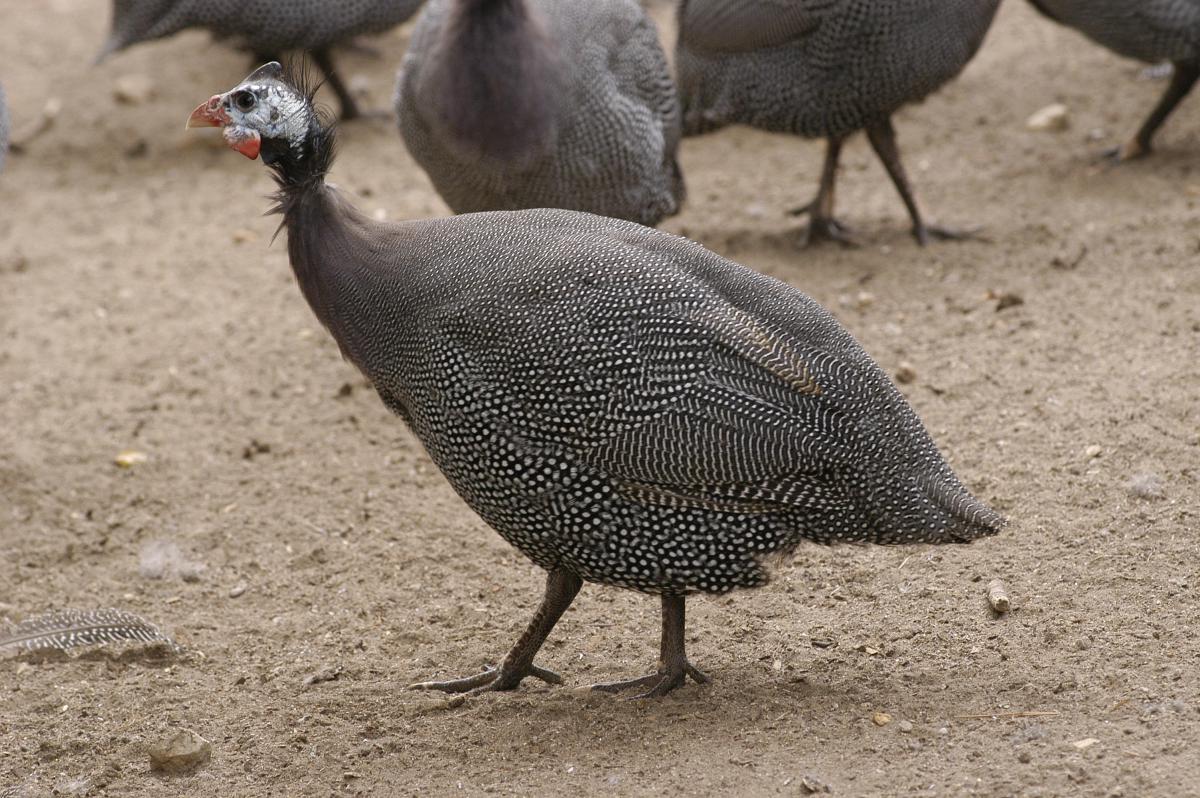Guinea fowl is a very valuable kind of poultry of palatable meat. In the first half of the 20th century it was traded abroad strangled, as wildfowl. It starts laying eggs at the end of April and lays an annual amount of 50 to 80 eggs of yellowish-red shell weighing about 50 g. It prefers to lay eggs in a hidden place. The shell of its eggs is thick; therefore the eggs can be stored for a longer period of time. It is a very hardy, quarrelling, fierce kind of poultry which is very good at searching for food and exterminating insects. Therefore, free range keeping of the birds is recommended. In Hungary mainly the bluish-grey colour variety has been spread, but grey (silver), brown (red) and spotted varieties also occur to a smaller extent. The plumage of the bluish-grey guinea fowl is evenly spotted or spangled with white dots on a bluish-grey background. Wing and tail feathers are brown, bordered with a whitish mottle. Neck and breast is coloured violet-grey without dots. The chicks at hatching are brownish with longitudinal darker bands on the back. The white guinea fowl is less common; its plumage has a velvety shine and is spangled with silvery white dots on a cream-white background. Day-old chicks are greyish with some lighter bands and down feathers. The breed, protected as an indigenous one, is registered as Hungarian Landrace Guinea Fowl. Body weight of the male is 1.30 to 1.60 kg, while that of the female is 1.20 to 1.40 kg.

